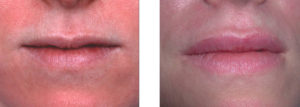The most common method for lip augmentation is with injectable fillers. While other more surgical options exist such as lifts and implants, making the lip bigger by injections are quick, easy to do, and have instantaneous results. (notice that I did not say painless!) While five years ago, only two injectable filler options existed (collagen and a first-generation hyaluronic acid filler, Restylane), the choice between them was pretty clear. But as of today, there are now eight commerically-available injectable filler options and more are sure to come in 2009. With so many choices, it is impossible for any patient to know which injectable filler is best for the lips and certainly some physicians are in a quandry as well.

All injectable fillers will work for lip augmentation and their effectiveness is the same no matter the marketing name or manufacturer. The only difference between them is……how long do they last and how much do they cost? In short, the question is an issue of value with their use. The only way to figure out how long hyaluronic acid lip injections will last is to know the concentration of hyaluronic acid in the product and how well it is cross-linked together. Both issues which a patient can not determine. As there are no studies that directly compare one hyaluronic acid product to another in a prospective lip augmentation study (someday there will be but none exist as of now), patients have to guided by what their physician injector tells them.
In my experience, some hyaluronic acid (HA) fillers last longer in the lips than others. The range of persistence is anywhere from 4 to 12 months. For the sake of simplicity, for example, the newest hyaluronic acid filler Prevelle (HA concentration of 5 mg/ml) lasts about 3 to 4 months while Juvaderm (HA concentration 24 mg/ml) lasts around 8 to 9 months in my experience. And, not surprising, the cost in my practice is also different with the longer lasting one priced higher. (as it should be) With such an array of HA injectable fillers, I have found that it is now possible to ‘get what you pay for’. You can now choose your injectable lip augmentation result pretty much on the price you want to pay. Some HA injectable fillers cost more than others but they last longer too.
Dr. Barry Eppley
Indianapolis, Indiana


